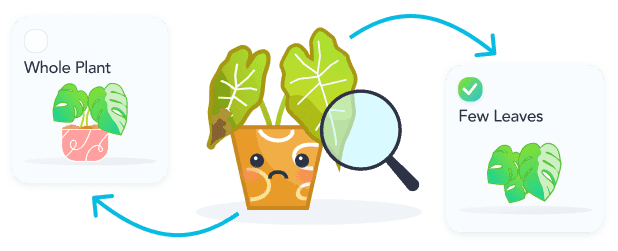Every nulld
Recommended Frequency
1 /2 cup of water
Recommended Amount
It is best to water your air plant by submerging it completely for a short amount of time. Be sure to shake it out and let it dry out so water does not sit on the inside and cause rot.
Every 150d
Recommended Frequency
Fertilize your Ball Moss once a month in the spring and summer using a cactus/succulent liquid fertilizer.
Indirect Sun
Recommended
Indirect Sun or Filtered Sun is when sun exposure is being filtered through a sheer curtain or is not able to have the sun's rays directly hit the leaves/flowers of your plant.
N/A
Recommended Soil
Peat Soil is an acidic soil that retains a lot of moisture and slows decomposition. Due to such a high moisture retention this mix may require irrigation to help with draining. This soil type is best used when paired wit...

Shop Ball Moss
Questions about Ball Moss
Ball moss (Tillandsia recurvata) is a non-parasitic epiphyte belonging to the bromeliad family. It thrives by attaching itself to tree branches, absorbing moisture and nutrients from the air and rainfall. Despite its nam...

Toxicity of Ball Moss

Common Pests and Diseases
Root Rot
Overwatering
To address root rot in ball moss, it's crucial to first allow the plant to dry out by reducing watering frequency significantly. Ensure the plant is in well-draining soil and a pot with adequate drainage holes. If the rot is advanced, you may need to remove the affected roots and repot the plant in fresh soil. Monitoring the plant's watering needs more carefully in the future will prevent recurrence of the issue.
Browning and Drying
Underwatering
Ball moss (Tillandsia recurvata) is an epiphyte, meaning it absorbs moisture and nutrients from the air rather than the soil. However, in dry conditions, it can suffer. To remedy underwatering, mist the ball moss thoroughly with water every few days, especially during dry or hot periods. Ensure it's located in an area with good air circulation but not in direct, harsh sunlight. If indoors, a bathroom with natural light can provide a more humid environment. Regular misting mimics the natural humidity these plants thrive in.
Sap depletion
Scale insects
Scale insects can cause significant harm by sucking sap from the ball moss, weakening it. To manage this issue, it's advisable to first try removing the insects manually if the infestation is small. For larger infestations, applying horticultural oil or insecticidal soap directly to the affected areas can be effective. These treatments suffocate the pests without harming the plant. It's crucial to follow the product instructions carefully and possibly apply multiple treatments for complete eradication.
Fungal Infection
High humidity and poor air circulation
To manage fungal infections in ball moss, it's crucial to improve air circulation around the plant. This can be achieved by pruning dense foliage and ensuring the plant is not overcrowded. Additionally, reducing humidity levels can help prevent further fungal growth. If the infection is severe, applying a fungicide specifically designed for use on ball moss or similar plants may be necessary. Always follow the product's instructions for the best results.

Related Plants
Other Articles:
Top 10 Most Popular Roses
Mar 22, 2022
How to Care for China Roses
Mar 11, 2022
How to Care for Chinese Money Plants
May 15, 2020
How to Grow and Care for A Bird of Paradise
Apr 26, 2020
Top 10 Plants To Grow In A Terrarium
May 31, 2022
How to Grow and Care for Lucky Bamboo
Mar 29, 2022
How to Grow and Care for Corn Plants
Mar 29, 2022
How to Care for Madagascar Dragon Trees
Mar 21, 2022



